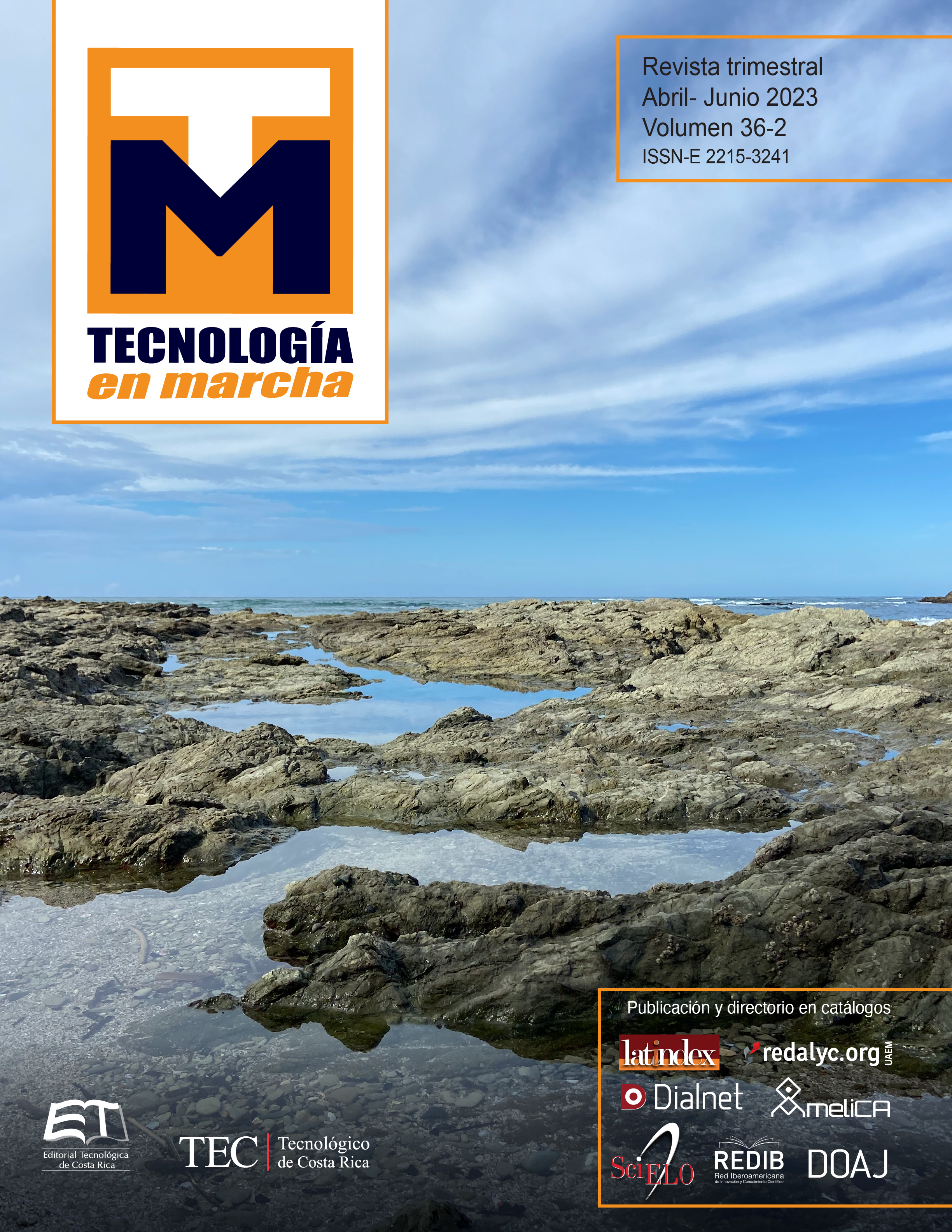Hydrological and hydrodynamic analysis of the Guayabo National Monument and its impact due to climate change
Main Article Content
Abstract
In Costa Rica there is a Civil Engineering heritage and a legacy, in the province of Cartago: Guayabo National Monument is a site with archaeological sites dating back more than 1400 years AD. Today there have been different problems of erosion and waterlogging at the site that threaten to deteriorate of infrastructure.
The importance of the research focuses on an analysis of the current and future runoff and how it may be affected by climate change, and how the issue can be solved by means of an infiltration ditch.
The hydrodynamic data was obtained from a 30-minute storm, with a return period of 50 years with an increase in rainfall of 18% due to climate change, where the variables of runoff speed and draft are studied. The critical values obtained are 1.43 m / s and 0.47 m respectively. The critical hydrograph corresponding to the scenario with a return period of 50 years and an increase of 18%, suggests a flow of 0.65 m³ / s and the hietograph under the same scenario shows a precipitation amount of 19 mm.
An infiltration ditch with GeoPockets is proposed as a solution to accumulate surface runoff, which helps reduce waterlogging and stops erosion.
With the proposed solution, it is possible to free monument area from surface runoff without drying up the hydraulic system or the channels of the Guayabo National Monument.
Article Details

This work is licensed under a Creative Commons Attribution-NonCommercial-NoDerivatives 4.0 International License.
Los autores conservan los derechos de autor y ceden a la revista el derecho de la primera publicación y pueda editarlo, reproducirlo, distribuirlo, exhibirlo y comunicarlo en el país y en el extranjero mediante medios impresos y electrónicos. Asimismo, asumen el compromiso sobre cualquier litigio o reclamación relacionada con derechos de propiedad intelectual, exonerando de responsabilidad a la Editorial Tecnológica de Costa Rica. Además, se establece que los autores pueden realizar otros acuerdos contractuales independientes y adicionales para la distribución no exclusiva de la versión del artículo publicado en esta revista (p. ej., incluirlo en un repositorio institucional o publicarlo en un libro) siempre que indiquen claramente que el trabajo se publicó por primera vez en esta revista.
References
L.-U. Gabriela Contreras, «Tecnología permite conservar en memoria histórica digital sitio arqueológico,» 29 Abril 2014.
J. R. B. Brenes, Análisis de las Estructuras Hidráulicas del Monumento Nacional Guayabo, San José: Ciudad Universitaria Rodrigo Facio, 2014.
M. A. Wong, «Manejo de la fuerza y la velocidad del agua: sector este del sistema ihdraulico del sitio arqueológico Monumento Nacioanal de Turrialba,» 24 Julio 2020. [En línea]. Available: file:///C:/Users/PROBOOK/Downloads/43376-Texto%20del%20art%C3%ADculo-159894-1-10-20200806.pdf.
A. T. Giralda y L. R. M. Andrés F., «Soluciones basadas en la Naturales,» 2018. [En línea]. Available: http://www.conama.org/conama/download/files/conama2018/GTs%202018/10_final.pdf.
D. W.-G. Vahrson, L. M. A. Sánchez y L. I. A. Beita, Cálculo de la intensidad de lluvia.
Grupo Intergubernamental de Expertos sobre el cambio climático (IPCC), «Cambio Climático 2014 informe de síntesis,» 2014. [En línea]. Available: https://www.ipcc.ch/site/assets/uploads/2018/02/SYR_AR5_FINAL_full_es.pdf.
N. R. Morales, «Curvas de Intensidad duración frecuencia de algunas estaciones metereológicas mecánicas,» 2011. [En línea].
D. Escobar, G. a. E. P. y C. Enrique, Relaciones gravimétricas y volumétricas del suelos, Uniersidad Nacional de Colombia, 2016.
Geocell, «HDP Geocell,» S.F. [En línea]. Available: http://en.hxgeos.cn/product/141.html?gclid=CjwKCAjw07qDBhBxEiwA6pPbHnW4ht3Fr-i0Bd8U07EiXO5yPHM6L8omNdwLTxr6WOYbqq2s1R287xoCI4UQAvD_BwE.
R. Hernández, C. Fernández y P. Baptista, Metodología de la Investigación, Ciudad de México: Compañia editorial Ultra, S.A. de C.V, 2000.
InfraGrass, «InfraGrass,» 2020. [En línea]. Available: https://www.infragrass.com/.
J. R. B. Brenes, Análisis de las estructuras hidrálicas del Monumento Nacional Guayabo, San Jose, 2014.

